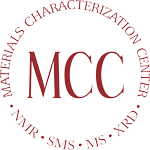Understanding the surface chemistry and morphology of materials is a very important aspect of science and technology. In recent years the fields of materials science, biology, electronics, and pharmaceuticals, among others, have experienced an impressive increase in the use of surface techniques. For example, particle size and porosity, which are particularly important in the pharmaceutical industry for the characterization of excipients and final formulations, are determined with surface science techniques. In the field of microelectronics, both morphology and chemical composition are determined in the nanometer and micrometer range respectively.
In addition, X-Ray diffraction area is a very powerful technique used for the non-destructive characterization of materials and in particular of industrial solids. Essentially, the technique involves the acquisition of a pattern of reflected x-rays from a sample. This pattern arises due to the crystallographic arrangement assumed by atoms constituting the solid being examined. Consequently, the crystal structure and the orientation of the solid material can be readily established. This information can be used to establish the existence of undesirable polymorphic forms which can change the physical properties of an industrial solid, such as solubility, hardness, bioactivity and friability.
The Surface Microscopy and Spectroscopy (SMS) & Crystallography Facility is one of the most used and demanding by the industry. Some examples of the types of materials routinely analyzed at the SMS Facility are: pharmaceutical solids, active materials, polymers, metallic and semiconductor materials, electronic devices and unknown solids.
This facility has the capability of giving services to pharmaceutical, microelectronics, medical devices, biopharmaceutical, catalyst, coating, food and electroplating companies.


Get Social